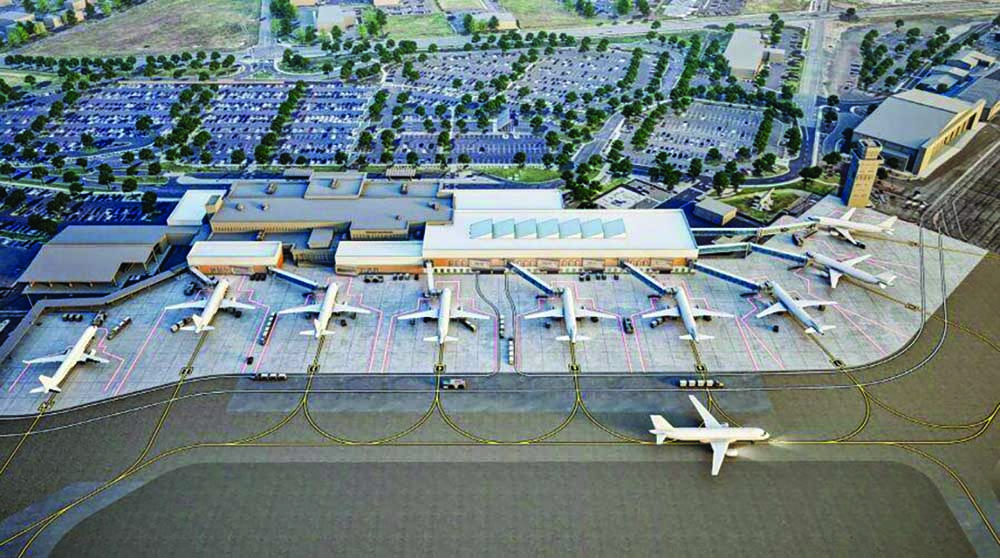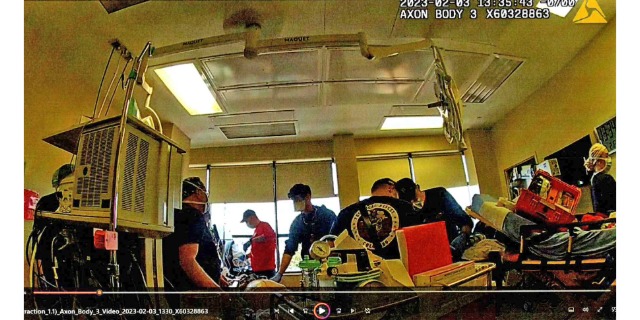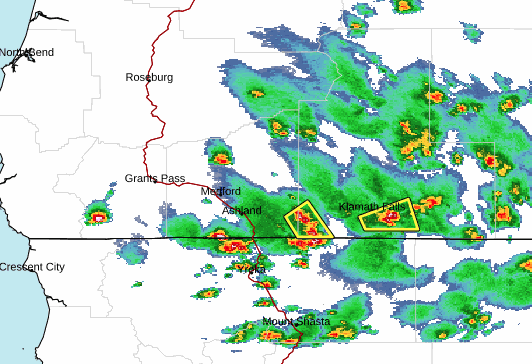Medford airport terminal expansion project moves into design phase
Published 4:58 pm Friday, January 17, 2025

- A Rogue Valley International-Medford Airport expansion plan image shows up to eight passenger sky bridges.
Architectural and design services for the $184 million expansion of the Rogue Valley International-Medford Airport terminal are being sought through a Jackson County Request for Qualifications.
Trending
Passenger numbers are projected to rise from current levels of around 1 million per year to 1,535,000 by 2032 and 1,919,000 by 2041. The current building would nearly double in size under the proposals and become a two-story terminal that could handle six planes at a time. Concept drawings show up to eight skybridges connecting planes to a new concourse.
The RFQ is based on a Terminal Concept and Budget report the airport commissioned last year, prepared by Mead & Hunt, a national firm that specializes in airport infrastructure. It incorporates information from the airport’s 20-year master plan that was prepared in 2021.
“The Airport is looking for an architect who will highlight the local region and incorporate the uniqueness of the area and spectacular views in the design of the terminal expansion,” the RFQ states. The master plan called for the terminal to double in size to 144,576 square feet.
Trending
Proposals need to be submitted to the county by Feb. 19. A selection committee will convene on Feb. 26, and finalists may be interviewed March 5. The contract is expected to start April 1.
Design work could take 18 to 24 months, Airport Director Amber Judd wrote in an email in response to questions. Construction could begin in late 2026 or 2027.
The selected firm would provide service for Phase 1 of a five-phase expansion. The contract would also include options to extend the service for the other four phases.
Terminal building expansion projects will occur in phases, with corresponding commercial apron aircraft parking improvements. Considerations in developing the project phasing plan include minimizing disruptive scheduling to avoid making a portion of the facility inoperative due to construction and preventing extra costs resulting from improper project scheduling.
“At this time, we don’t know when all phases would be complete. That will depend on actual design, phasing, and available funds,” Judd wrote.
Phase 1, expansion of the current terminal, is the most expensive undertaking. It is listed at $113,243,000 in current dollars.
Phase 2 would be expansion of outbound baggage facilities. It’s estimated to cost $12,650,000. Phase 3 would cost $25,188,000 and provide upgraded baggage claim facilities, concessioners’ stations and offices.
The security screening facilities expansion would be addressed in Phase 4 at a cost of $8,754,000. Phase 5 would include pre-security area rehabilitation for $8,303,000. Expansion of the ticketing area may occur south of the current location.
The county intends to build the project through a construction manager at-risk contractor delivery method. The design firm would assist the county in a bid process to select the contractor.
Two different concourse expansion configurators are shown in the Terminal Concept and Budget report. One that would incorporate linear expansion of the current building to the north is listed as the preferred alternative. The other would feature an angled concourse extending north from the current facility. Both would add more skybridges to the current two.
The linear expansion was selected as the preferred alternative as it provides stakeholders with a functional terminal layout that can meet passenger demand and tenants’ facility needs. Construction of this alternative would allow for existing operations to be minimally disrupted.
“We will look at options for a linear design. The other, bumped-out option has some line-of-sight issues for the tower,” Judd wrote in her response. The linear, two-level variant will be used to evaluate financial feasibility and implementation, the report states.
Debt will be used to finance part of the project, although some federal grant money will be available. About $40 million in debt is assumed in the report for financing of the first phase.
Debt repayment would come, in part, from passenger fee charges assessed to each flyer. At the beginning of its 2025 fiscal year, the airport had accumulated approximately $68 million in unrestricted cash reserves available for operations and capital project funding. An additional $63.9 million in net operating revenues are anticipated to be generated during the planning period.
Based on the projected amount of annual professional finance company collections, existing debt utilizing PFC funds, and considering other airport demands on PFC cash flows for other capital projects, the analysis assumes that PFCs will provide approximately $1.8 million in funds per year for the new debt service. That corresponds to a $25 million portion of the new $40 million debt issue.
Medford passenger numbers first surpassed one million in 2018 when there were 1,010,920. In 2019, the airport hit its highest total at 1,087,873 passengers. In 2020, numbers were cut to 509,624 due to the pandemic. In 2021, there were 886,670 passengers, with 1,031,693 using the facility in 2022. In 2023 the Airport saw 979,211 passengers.
Final figures aren’t in for 2024, but the year should top one million. Through November, the airport had seen 947,194 customers.








